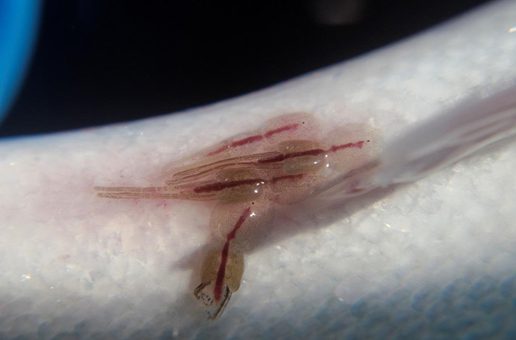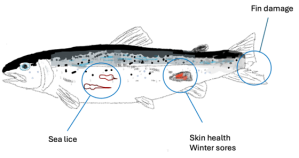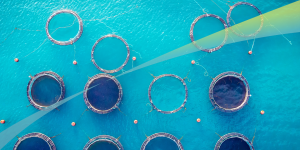By Senior Breeding Programme Manager Dr Marie Smedley
Sea lice remains the biggest disease challenge in salmon culture, costing the industry more than $US 874M per annum1. It also poses challenges to fish welfare and environmental public perception. There’s a wealth of research about how to combat the parasite, and it is well known that multifaceted approaches are required. Drugs are effective but must be carefully managed in case lice develop resistance and so that they don’t put strain on the environment.
Cleaner fish have also proven effective, but challenges remain in establishing secure breeding programmes and developing domesticated lines that are optimised for delousing performance in cages. Vaccines remain an invaluable research pathway towards developing environmentally sound and effective tools for sea lice management, however no commercialised product is available and sea lice will remain a challenge in some form for the foreseeable future. Other non-medicinal treatments such as snorkel cages show promise but cannot stand alone in the fight against sea lice.

Selecting for sea lice resistant salmon is a well-documented option for salmon producers. A selective breeding programme gives cumulative improvements in every generation without any of the adverse environmental effects, and reduces the need for other treatments. Moderate heritability has been shown against the two most problematic species – Caligus rogercresseyi in the southern hemisphere2 and Lepeophtheirus salmonis in the northern hemisphere3. Genetic management is rapidly becoming commonplace in a market where all producers are facing the same challenge.
There are a number of ways that genetics can give a producer a competitive edge.

- Disease challenge
Resistance to disease is routinely evaluated on a sibling group to your broodstock candidates called a ‘sentinel group’, which would also be composed of many families and representatives. These individuals would then be challenged, in this case by sea lice larvae (copepods), until the attachment life stages (Chalimus). These are subsequently counted and tissue samples taken for genetic assessment. The most resistant families can then be identified to select in the breeding nucleus group. At Xelect we have assisted customers to develop disease challenge trials, including for sea lice in Atlantic salmon.
- Functional markers
Functional markers (normally SNP QTLs) target the section of DNA that will cause a specific trait outcome and have been discovered for resistance to C. rogercresseyi in Atlantic salmon2. Because well-validated functional markers are so specific, they have a significant advantage over family selection which relies on pedigree-based similarities to select a more robust individual. Once validated in a strain, this can be analysed without year-on-year disease challenge trials and as part of routine genetic analyses for selection, reducing the overall cost.
- Genomic selection
One of the drawbacks of performing disease challenge trials with traditional pedigree methods is that you are limited to family-level differences in disease resistance. Genomic selection approaches have deeper resolution, going to the level of an individual’s genomic makeup. This means that the associated genetic calculations will be more accurate and therefore have greater predictive power in improving resistance in the next generation. The drawback to genomic selection is the prohibitively expensive cost for most producers. We have recently developed cost-effective genomic selection tools at a fraction of the price of traditional genomic selection, making traits such as sea lice resistance accessible to a broader range of customers.
Any one of these approaches will improve the odds, but a concatenation of all 3 approaches provides an effective toolkit for genetic management. At Xelect we have everything to get you started on a pathway to sea lice resistant stocks.
1 Brooker et al 2018. ICES Journal of Marine Science. 75 (4):1214–34.
2 Robledo et al 2019. Frontiers in Genetics. https://doi.org/10.3389/fgene.2019.00056
3 Gharbi et al. 2015. Journal of the Royal Society Interface. 12 (110) https://doi.org/10.1098/rsif.2015.0574








